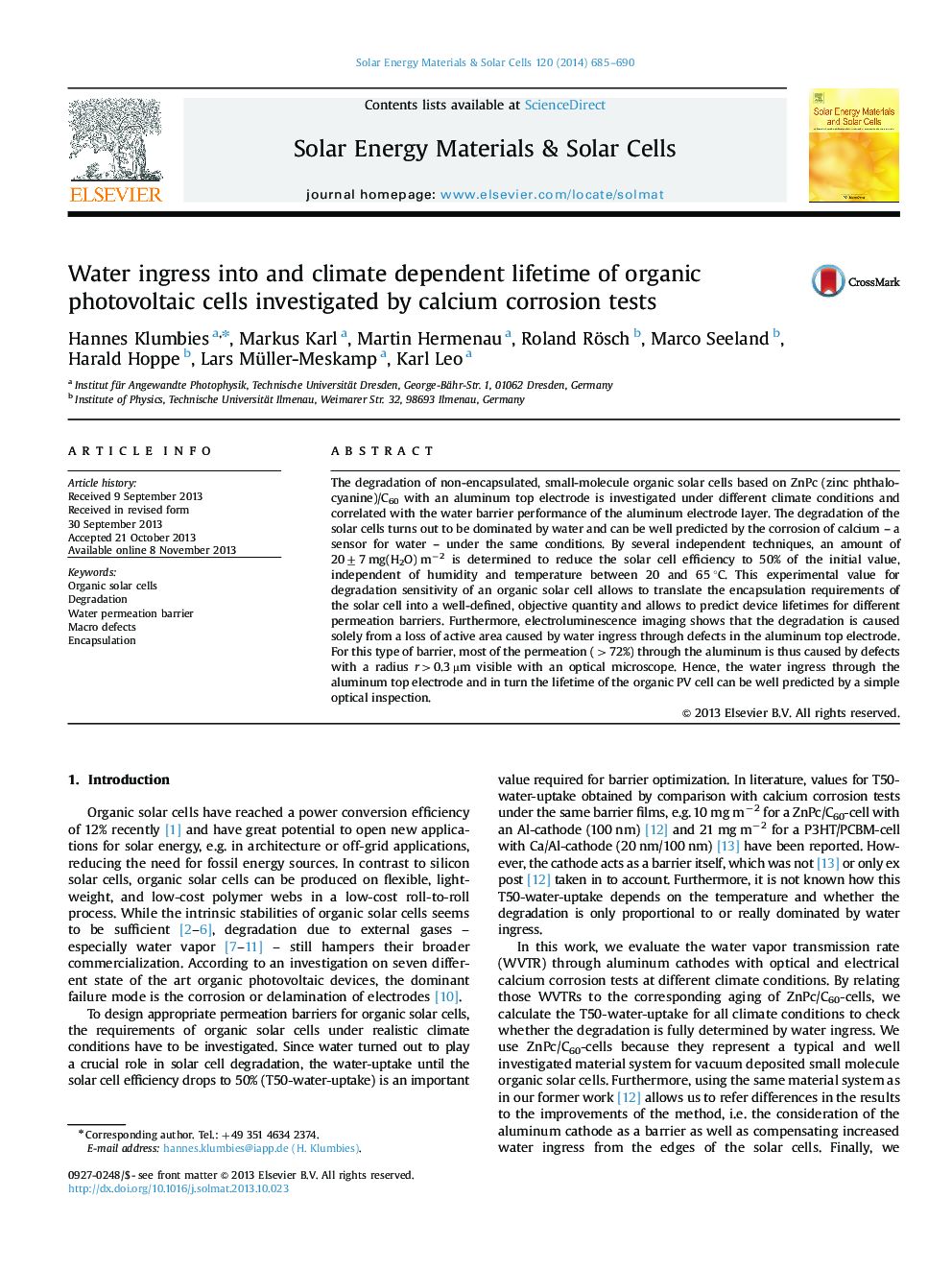| Article ID | Journal | Published Year | Pages | File Type |
|---|---|---|---|---|
| 78184 | Solar Energy Materials and Solar Cells | 2014 | 6 Pages |
•Organic solar cells and calcium sensors protected by same barrier: 100 nm aluminum.•Calcium sensors can well predict solar cell lifetime—independent of climate.•20 mg(H2O) m² degrade 50% of the active area.•>72% of water ingress occurs through large defects (>0.4 µm) in aluminum barrier.•Water ingress is predictable by a simple optical inspection of the aluminum barrier.
The degradation of non-encapsulated, small-molecule organic solar cells based on ZnPc (zinc phthalocyanine)/C60 with an aluminum top electrode is investigated under different climate conditions and correlated with the water barrier performance of the aluminum electrode layer. The degradation of the solar cells turns out to be dominated by water and can be well predicted by the corrosion of calcium – a sensor for water – under the same conditions. By several independent techniques, an amount of 20±7 mg(H2O) m−2 is determined to reduce the solar cell efficiency to 50% of the initial value, independent of humidity and temperature between 20 and 65 °C. This experimental value for degradation sensitivity of an organic solar cell allows to translate the encapsulation requirements of the solar cell into a well-defined, objective quantity and allows to predict device lifetimes for different permeation barriers. Furthermore, electroluminescence imaging shows that the degradation is caused solely from a loss of active area caused by water ingress through defects in the aluminum top electrode. For this type of barrier, most of the permeation (>72%) through the aluminum is thus caused by defects with a radius r>0.3 µm visible with an optical microscope. Hence, the water ingress through the aluminum top electrode and in turn the lifetime of the organic PV cell can be well predicted by a simple optical inspection.
Graphical abstract.Figure optionsDownload full-size imageDownload as PowerPoint slide
